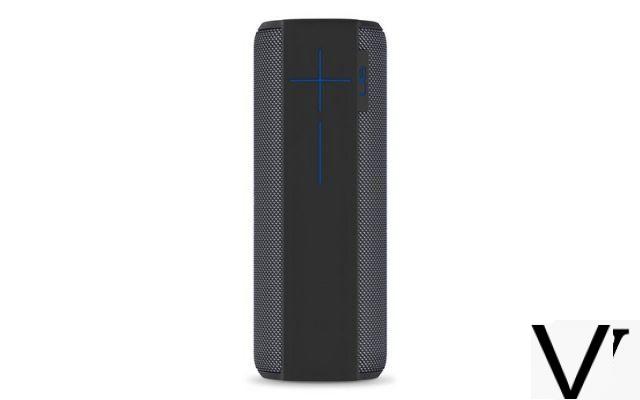 At the time of the UE Boom test, Logitech had just handed over its mobile audio division to Ultimate Ears, an acquisition made by the Swiss group five years earlier (in 2008). Logitech, which had lost its splendor in this area, blew us away with its small autonomous speaker - it was to become a must in the nomadic genre. A year and a half later, UE returns with a Boom on steroids, the Megaboom freshly announced at CES.
At the time of the UE Boom test, Logitech had just handed over its mobile audio division to Ultimate Ears, an acquisition made by the Swiss group five years earlier (in 2008). Logitech, which had lost its splendor in this area, blew us away with its small autonomous speaker - it was to become a must in the nomadic genre. A year and a half later, UE returns with a Boom on steroids, the Megaboom freshly announced at CES.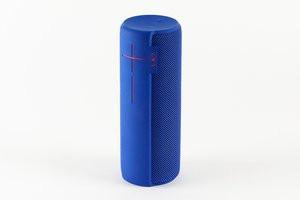

Presentation and ergonomics
The Megaboom is a bigger Boom. When we say that, we've said almost everything. All the design elements have been taken over, in the XL version, starting with the cylindrical packaging. But how big a difference in size is there between normal and mega? 4,5 cm in height (22,5 against 18 cm) and 2 cm in diameter (8,5 against 6,5 cm). Not to mention the 338 g difference between the two models (876 versus 538 g). But can we then still speak of a nomadic speaker with this Christmas log template?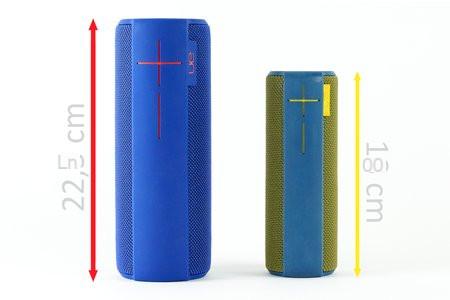
Compared to the standard UE Boom, in the size of a 50 cl can of hoppy drink, the Megaboom will clearly take up a lot more space in a backpack. And it won't fit in a jacket pocket, unlike the Boom. Already that was limited with the latter ... In the end, it is the audio performance that will tell us if the speaker is compact or not. If it sounds like a symphony orchestra after all ...

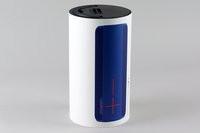
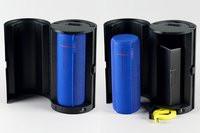
The Megaboom next to the Boom, viewed from above. And the packaging always so nice.
Size considerations excluded, the only difference between the UE Boom and the Megaboom is that the latter has flexible covers on its two sockets, micro USB and mini jack. Probably what makes it waterproof IPX7 (up to 1 m, the duration is not specified), while the small model is only resistant to splashes. Otherwise we find the same rubber, the same densely meshed canvas, the same controls (volume + and -, power button, Bluetooth key). And always the small ring screwed in the center of the base, allowing either the suspension or the fixing on the foot of the speaker.
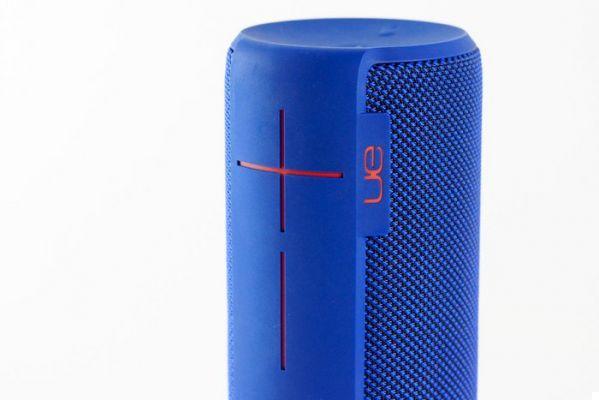
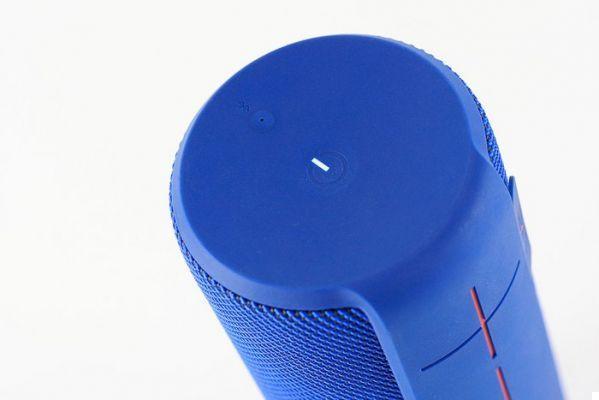

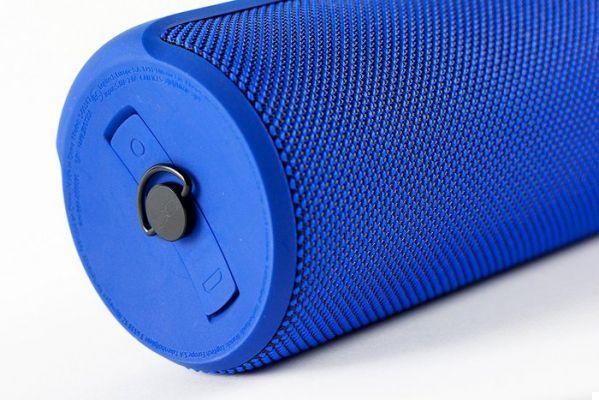
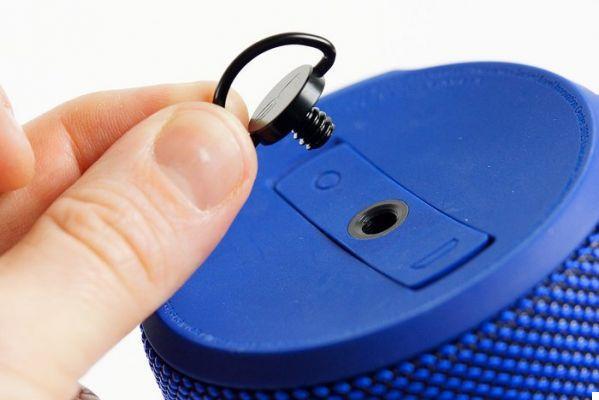
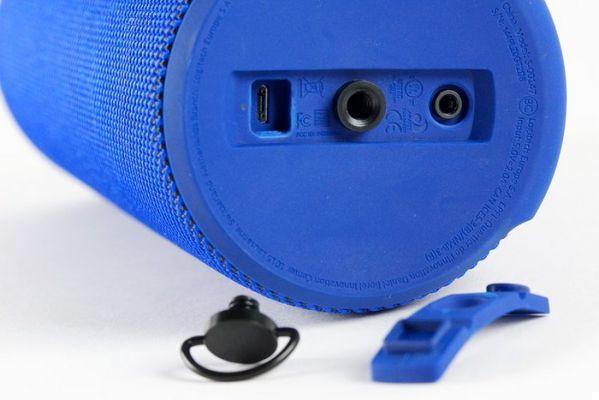
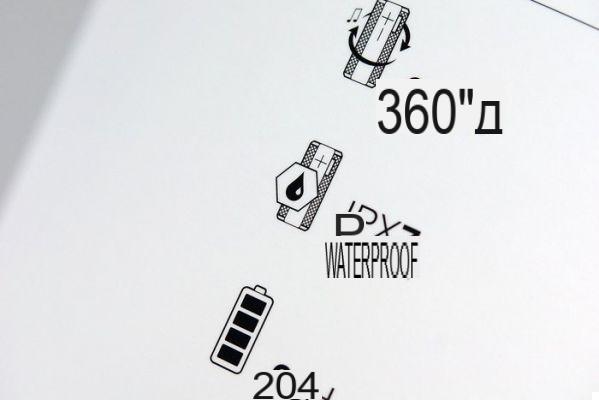 The Megaboom from all anglesThe Megaboom from all anglesThe Megaboom from all anglesThe Megaboom from all anglesThe Megaboom from all anglesThe Megaboom from all anglesThe Megaboom from all angles
The Megaboom from all anglesThe Megaboom from all anglesThe Megaboom from all anglesThe Megaboom from all anglesThe Megaboom from all anglesThe Megaboom from all anglesThe Megaboom from all anglesThe Megaboom is inspired by its predecessor at all levels: hands-free mode with integrated microphone, NFC to facilitate Bluetooth pairing, simultaneous pressing of the two volume keys to make the speaker tell the charge level of the battery, AVRCP profile not supported (in plain text, this means that it is not possible to skip to the next or previous song from the speaker). The only - slight - nuance is that the mobile application has changed ... while offering exactly the same features as before: creation of a stereo pair, equalizer, alarm clock and regular updates. The Megaboom stands out (yes it does!) By adding the possibility of being switched on remotely, from the application, or to perform firmware updates over the air (via the phone). The creation of a stereo pair, supposed to work between a Mega and a Boom, has systematically failed with us. Even if it makes more sense in terms of sound distribution to use two identical speakers, it is unfortunate not to allow first-time customers interested in this Mega to pair it with their Boom.

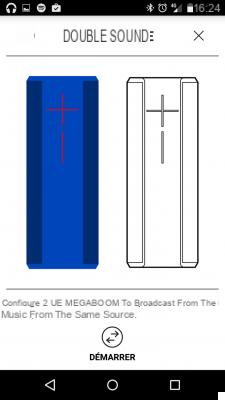
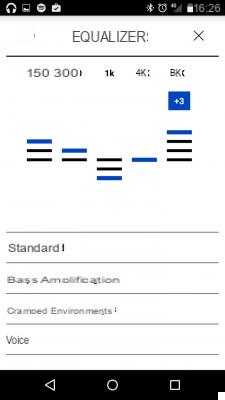


 UE MegaboomApplication UE MegaboomApplication UE MegaboomApplication UE MegaboomApplication UE MegaboomApplication UE Megaboom
UE MegaboomApplication UE MegaboomApplication UE MegaboomApplication UE MegaboomApplication UE MegaboomApplication UE MegaboomBuy the Ultimate Ears Megaboom speaker
Battery life and audio quality
Ultimate Ears has boosted its battery accordingly so that autonomy does not suffer from the increase in power. The manufacturer, fairly fair in his estimates, announces 20 p.m., we can probably bet on 15 to 18 p.m.: much more than is needed for an evening, a picnic, a trip by car or even a day at to rest. It also recharges quickly. A little less than 2 hours 30 minutes for a full recharge (with the supplied charger from 2A - 5 to 9V).
So what does the Megaboom sound like? The enclosure is also based on two active speakers covering the whole spectrum, complemented by two passive speakers for bass reinforcement. Except that they are larger: 5 cm versus 3,8 cm for the active ones, 5 x 10 cm versus "we don't know how wide" by 5 cm for the passive ones. Enough to ensure a higher maximum sound level (90 dB against 88 dB), but above all, over a wider frequency range from 65 Hz to 20 kHz (against 90 Hz to 20 kHz).
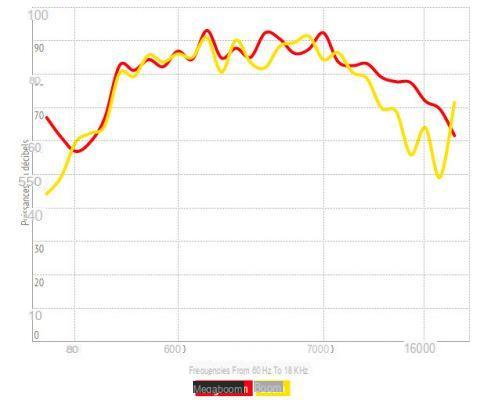 Curve of power readings at different frequencies (60 Hz to 18 kHz). The measurements are made with a sound level meter at 1 m
Curve of power readings at different frequencies (60 Hz to 18 kHz). The measurements are made with a sound level meter at 1 mIn fact, these technical elements actually materialize by a significant gain in the bass register: the bass is present, especially in the 60-70 Hz range where the boom is not audible. Between 80 and 90 Hz, where the Boom starts, the little one sounds louder, but the Megaboom takes over between 100 and 300 Hz. Then, the two speakers compete up to 2 kHz. The Megaboom produces peaks at 3 and 7 kHz, the Boom, between 5 and 6 kHz: the precision of the treble in both cases is good. But it is better on the Megaboom which maintains itself cleanly until the end of the spectrum while the Boom erodes from 10-11 kHz.
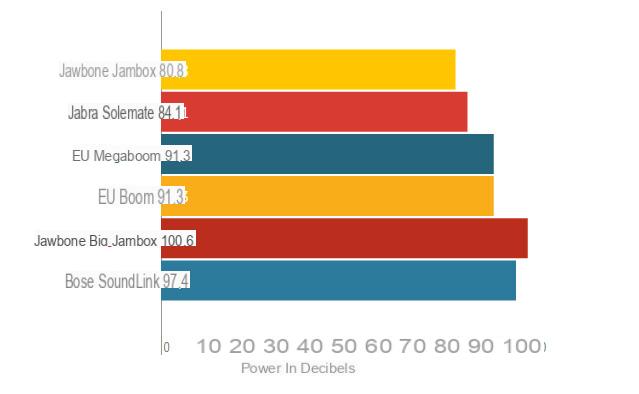 The maximum volumes measured by our sound level meter at 1 m from the speakers, on the same test piece (Kid A from Radiohead)
The maximum volumes measured by our sound level meter at 1 m from the speakers, on the same test piece (Kid A from Radiohead)On vocals, the two speakers play on the same tables, which is why we measure similar peaks at 91,3 dB at full blast on our Kid A test track thanks to Thom Yorke's vocals.
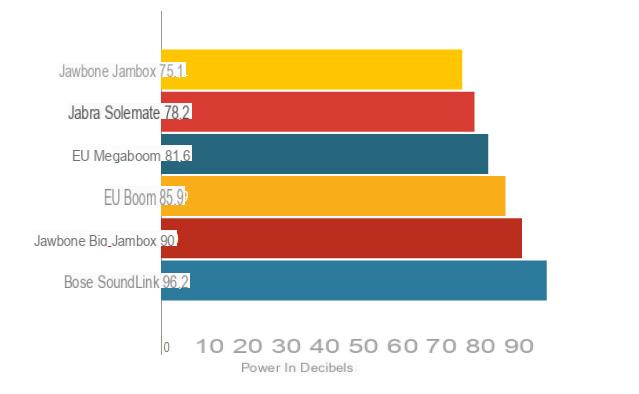 Same thing, but lowering the volumes for each speaker until the saturation disappears
Same thing, but lowering the volumes for each speaker until the saturation disappearsOn the other hand, we have to considerably reduce the volume on the Megaboom to get rid of the distortion in the bass, slight but persistent in the instrumentation. We fall to 81,6 dB, while the Boom, which does not know this problem, for lack of consistent bass, becomes clean from 85,9 dB!
The Megaboom inherits bass, yes, but moderately controlled bass. They are often quite throbbing, their humming sometimes hinders the accuracy of the signal. And do not expect to dose them via the equalizer: any manual intervention instantly deteriorates the overall volume and balance. Sometimes it sounds good, sometimes it doesn't. And it will be necessary to pay more attention than ever to the surface where the speaker is placed to avoid parasitic vibrations.
Now, we are talking about a nomadic speaker, and if we stick to a quick feeling to the ear, the rendering is more flattering with the Megaboom, less focused on the voices. The superb spatialization of sound is still there, and we love that!
Conclusion
In writing and in a wide area around it, the Boom had caused a sensation. At the time the market had already taken well, but it was perhaps a little less saturated than today. What to think about this XL iteration? The product remains good, even very good in absolute terms: finish, design, 360 ° sound, autonomy, ergonomics ... However, something makes us more wary. The originality of the Boom is no longer, the Megaboom being mainly a copy / paste. But above all, the concept of a small enclosure to always carry with you takes a big hit here. And we are not talking about the bill, which increases by 50% compared to the Boom. Ultimate Ears is asking for 300 €!Audio in all of this? While the sound is rounded off in favor of more expressive bass, we regret on the other hand not to gain especially volume: the contribution is made more in presence than in power. We remember that at the time of the Big Jambox, the jump compared to the normal Jambox was phenomenal (almost 15 dB without distortion, 20 dB with). Finally, the clarity of the reproduction remains, but intelligibility is sometimes hampered by the hum of the bass. In short, around a swimming pool or in a festive setting, it's very good. But for a truly nomadic use, we always prefer the excellent Boom.
Ultimate Ears Megaboom
8Most
- Bass gain / round sound
- 360 ° sound diffusion
- Possibility of stereo pair / waterproof IPX7
- Hands-free / autonomy / design kit
The lessers
- Distortion in the bass at high volume
- Serious sometimes snoring
- Too cumbersome to be nomadic
- No AVRCP / 300 € each
Sound quality8
Autonomy9
Finishing9
- Most
- The lessers
- Details
- Bass gain / round sound
- 360 ° sound diffusion
- Possibility of stereo pair / waterproof IPX7
- Hands-free / autonomy / design kit
- Distortion in the bass at high volume
- Serious sometimes snoring
- Too cumbersome to be nomadic
- No AVRCP / 300 € each
Sound quality8
Autonomy9
Finishing9
Buy the Ultimate Ears Megaboom speaker


























